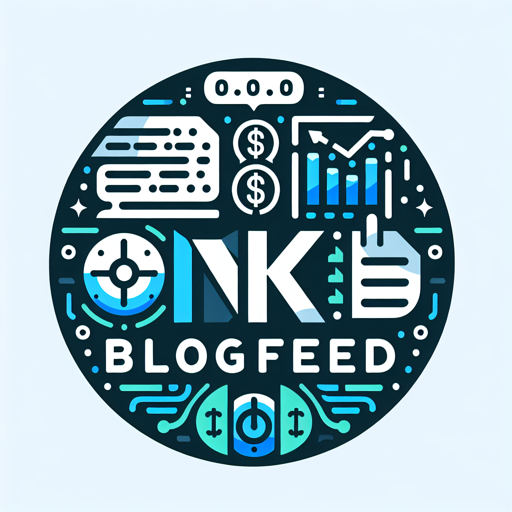In today’s fast-paced world, the challenge of balancing work and personal life has become increasingly complex. Individuals often find themselves juggling multiple responsibilities, from professional obligations to family commitments and personal interests. To effectively prioritize these responsibilities, it is essential to identify what truly matters.
This involves assessing both short-term and long-term goals, allowing individuals to allocate their time and energy accordingly. For instance, a professional might prioritize a project deadline while also ensuring that family events are not overlooked, creating a structured approach to managing competing demands. Moreover, prioritization is not merely about listing tasks; it requires a conscious effort to evaluate the significance of each responsibility.
Utilizing tools such as the Eisenhower Matrix can help individuals distinguish between what is urgent and what is important. By categorizing tasks into four quadrants—urgent and important, important but not urgent, urgent but not important, and neither—individuals can make informed decisions about where to focus their efforts. This strategic approach not only enhances productivity but also fosters a sense of control over one’s life, ultimately leading to a more balanced existence.
Key Takeaways
- Prioritize responsibilities to find the right balance between work and personal life.
- Set boundaries to create a healthy work-life integration and avoid burnout.
- Manage time effectively to maximize productivity in both work and personal life.
- Practice self-care to nurture well-being amidst work demands.
- Embrace flexibility, adaptability, and a positive mindset for work-life harmony.
Setting Boundaries: Creating a Healthy Work-Life Integration
Establishing clear boundaries is crucial for achieving a healthy work-life integration. In an era where technology blurs the lines between professional and personal time, individuals must take proactive steps to delineate their work hours from their personal time. This can be achieved by setting specific work hours and communicating these boundaries to colleagues and supervisors.
For example, an employee might choose to refrain from checking emails after 6 PM, thereby creating a dedicated space for personal activities and family interactions. Additionally, physical boundaries can play a significant role in maintaining this balance. Designating a specific area in the home for work can help individuals mentally separate their professional responsibilities from their personal lives.
This physical demarcation serves as a psychological cue, signaling when it is time to focus on work and when it is appropriate to engage in leisure activities. By consciously establishing these boundaries, individuals can cultivate a more harmonious integration of their work and personal lives.
Time Management: Maximizing Productivity in Both Work and Personal Life
Effective time management is a cornerstone of achieving balance between work and personal life. By employing various strategies, individuals can maximize their productivity in both realms. One popular method is the Pomodoro Technique, which involves working in focused bursts of 25 minutes followed by short breaks.
This approach not only enhances concentration but also prevents burnout by allowing for regular intervals of rest. Implementing such techniques can lead to increased efficiency at work while also freeing up time for personal pursuits. In addition to structured techniques, prioritizing tasks through effective planning is essential.
Utilizing digital calendars or task management apps can help individuals visualize their commitments and allocate time accordingly. For instance, scheduling specific blocks of time for family activities or personal hobbies ensures that these important aspects of life are not neglected amidst work demands. By mastering time management skills, individuals can create a more balanced lifestyle that accommodates both professional aspirations and personal fulfillment.
Self-Care: Nurturing Your Well-Being Amidst Work Demands
| Self-Care Metrics | Results |
|---|---|
| Hours of Sleep | 7-9 hours per night |
| Physical Activity | 30 minutes per day |
| Mental Health Breaks | 10 minutes every 2 hours |
| Social Interaction | At least 1 hour per day |
| Healthy Eating | 3 balanced meals per day |
Self-care is often overlooked in the pursuit of professional success, yet it is vital for maintaining overall well-being. Engaging in regular self-care practices can significantly enhance one’s ability to manage stress and maintain productivity. This may include physical activities such as exercise, which not only improves physical health but also boosts mental clarity and emotional resilience.
For example, incorporating a daily walk or yoga session into one’s routine can serve as a powerful antidote to the pressures of work. Furthermore, self-care extends beyond physical health; it encompasses mental and emotional well-being as well. Activities such as meditation, journaling, or simply taking time to unwind with a good book can provide necessary respite from the demands of work life.
By prioritizing self-care, individuals equip themselves with the tools needed to navigate challenges more effectively, ultimately leading to a more balanced and fulfilling life.
Flexibility and Adaptability: Embracing Change in Work and Life
In an ever-evolving landscape of work and personal responsibilities, flexibility and adaptability are essential traits for achieving balance. The ability to adjust one’s plans in response to unforeseen circumstances can alleviate stress and foster resilience. For instance, when faced with unexpected work demands or family emergencies, individuals who embrace flexibility are better equipped to navigate these challenges without feeling overwhelmed.
Moreover, cultivating an adaptable mindset encourages individuals to view change as an opportunity for growth rather than a setback. This perspective can be particularly beneficial in professional settings where roles and responsibilities may shift frequently. By remaining open to new experiences and willing to adjust priorities as needed, individuals can maintain a sense of balance even amidst uncertainty.
Communication and Support: Building a Strong Network for Work-Life Balance
Effective communication is key to establishing a supportive network that facilitates work-life balance. Sharing one’s needs and boundaries with colleagues, supervisors, and family members fosters understanding and collaboration. For example, discussing workload expectations with a manager can lead to more realistic deadlines that accommodate personal commitments.
Similarly, communicating with family about work obligations allows for shared understanding and support during busy periods. Building a strong support network also involves seeking assistance when needed. Whether it’s delegating tasks at work or asking family members for help with household responsibilities, recognizing that one cannot do it all alone is crucial for maintaining balance.
By fostering open lines of communication and cultivating supportive relationships, individuals can create an environment that promotes both professional success and personal well-being.
Mindfulness and Mindset: Cultivating a Positive Outlook for Work and Life Harmony
Mindfulness practices play a significant role in achieving harmony between work and personal life. By cultivating awareness of the present moment, individuals can reduce stress and enhance their overall well-being. Techniques such as mindfulness meditation or deep-breathing exercises can help individuals center themselves amidst the chaos of daily responsibilities.
For instance, taking just a few minutes each day to practice mindfulness can lead to improved focus and emotional regulation. Additionally, adopting a positive mindset is essential for navigating the challenges of balancing work and life. Emphasizing gratitude and recognizing achievements—no matter how small—can foster resilience and motivation.
By reframing negative thoughts into positive affirmations, individuals can cultivate an outlook that supports both their professional aspirations and personal happiness. This holistic approach ultimately leads to a more fulfilling life where work and personal commitments coexist harmoniously.


